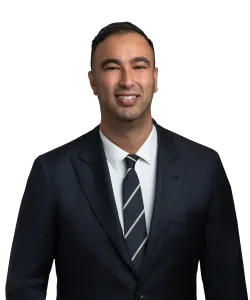USPTO Launches Streamlined Claim Set Pilot Program to Reduce Patent Pendency
The US Patent and Trademark Office (USPTO) recently launched the Streamlined Claim Set Pilot Program — a new initiative designed to expedite patent examination for eligible patent applications by advancing them out of turn until the issuance of a first Office Action.
To participate, applicants must ensure their application meets the streamlined claim limits and file a petition to make special on Form PTO/SB/472. For pending applications filed before the launch date, applicants may bring their applications into compliance with the pilot requirements by filing a preliminary amendment. The program is scheduled to run for one year from October 27, 2025, or until each technology center has accepted a limited number of cases.
Eligibility Requirements
The Pilot Program is only available for cases that meet the following criteria:
- Case Type: Original, non-reissue, or noncontinuing utility applications filed under 35 U.S.C. § 111(a) before October 27, 2025, that do not claim the benefit of any prior US nonprovisional or PCT application (no continuations/divisionals/CIPs; no § 371 national phase).
- Status: Pending, unexamined, and not yet docketed to an examiner when the petition is taken up for decision (petitions are generally dismissed if the application has been docketed by that time).
- Claim Set: One independent claim, 10 or fewer total claims, and no multiple dependent claims.
- Claim Format: Each dependent claim must refer to a previous claim, and incorporate all limitations of, the preceding claim and stay in the same statutory class.
- Formalities: The specification, claims, and abstract must have been filed in DOCX via Patent Center. No inventor may be on more than three other pilot-petitioned applications and only one petition under this pilot is allowed per application.
Each and every one of these requirements must be satisfied to participate in the Pilot Program. In practice, however, the claim set requirement can be cured through a preliminary amendment.
The Opt-In Process
Most otherwise-eligible cases for the Pilot Program will need only one adjustment: the claim set. If an application has more than one independent claim, more than 10 total claims, or any multiple dependent claims, a preliminary amendment must be submitted to bring the set into compliance. Moreover, each dependent claim must be recast to depend from (and incorporate all limitations of) the immediately preceding claim in the same statutory class.
To opt in, applicants must file the petition to make special on Form PTO/SB/472 with the fee under 37 C.F.R. § 1.17(h) ($150/$60/$30). These petitions are one-shot and nonrefundable. If a nonpublication request is on file, it must be rescinded (per PTO/SB/36) before or with the petition. The timing matters. The Office typically dismisses petitions if the application has been docketed to an examiner by the time the petition is taken up for decision, so applicants should submit the preliminary amendment before or with the petition and move promptly.
If the petition is granted, the application advances out of turn only until the first Office Action (or the first written restriction requirement). While under the pilot, the USPTO will not enter amendments that reintroduce multiple dependent claims, push the total above 10, or break the chained-dependency rule. After that, ordinary timing resumes. Applicants are therefore encouraged to use the first action to decide whether to file a continuation to restore broader claim scope while the parent proceeds.
Comparison to Track One Examination
The Pilot Program complements, rather than substitutes for, Track One examination. Specifically, the Program provides a low-fee path to an earlier first action for a narrow class of legacy § 111(a) cases at the price of strict claim limits. In contrast, Track One examination prioritizes prosecution through final disposition, with broader claim flexibility and higher fees.
In practice, many applicants will use the Pilot Program for targeted, early read-outs in a handful of undocketed cases, while reserving Track One for new, business-critical filings where speed to allowance is the goal.
Strategic Considerations
The Pilot Program is a tool for earlier information, not an end-to-end fast track. For that reason, the Program works best where a single, carefully drafted independent claim can serve as a bellwether for novelty/obviousness or § 101 to inform, for example, go/no-go, funding, continuation, or foreign-filing decisions. The Program may also be a good fit for businesses wishing to expedite patent prosecution but not requiring the broader flexibility and expense of Track One.
Conversely, portfolios that depend on multiple dependent claims (common in life sciences and chemistry) or on large, branching claim sets from the original filing may not be a good fit for this one-action head start. Likewise, if an application is already close to ordinary examination, the marginal timing benefit provided by the Program may not justify surrendering claim complexity. Applicants can always pursue breadth later through continuations if the first action is encouraging. For example, a software or artificial intelligence case with a robust specification but an uncertain § 101 or § 103 posture is a strong candidate for the Pilot Program; one tight system claim can quickly surface the examiner’s views to inform continuation and foreign-filing strategy. By contrast, a formulation case that relies on layered multiple dependent claims to cover dose, excipients, and patient subgroups may not be a good choice, particularly where the Pilot Program’s constraints force the applicant to surrender key variations.
Going forward, patent applicants should consider screening their dockets for pending, undocketed § 111(a) utility applications with actual filing dates before October 27, 2025, where a lean claim set is acceptable and an early first Office Action will drive a decision. Depending on capacity, it may make sense for applicants to prioritize eligible cases in technology centers that have not yet hit their pilot intake cap. Where submission is possible, applicants may wish to amend claims before or with PTO/SB/472, rescind any nonpublication request, and then file while the case is still undocketed when the petition is taken up for decision.
Contacts
- Related Practices


